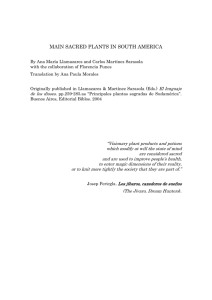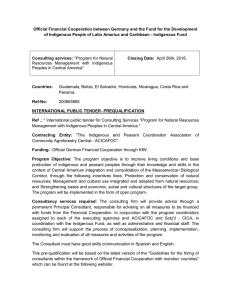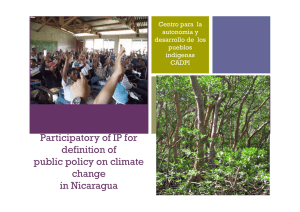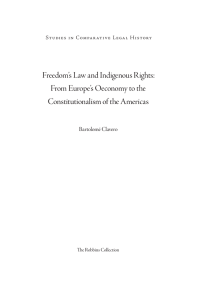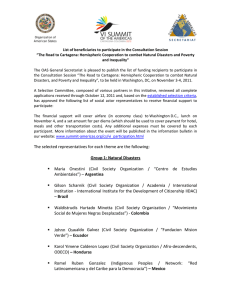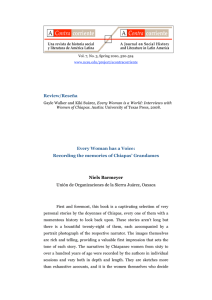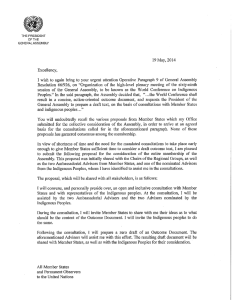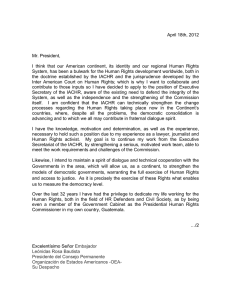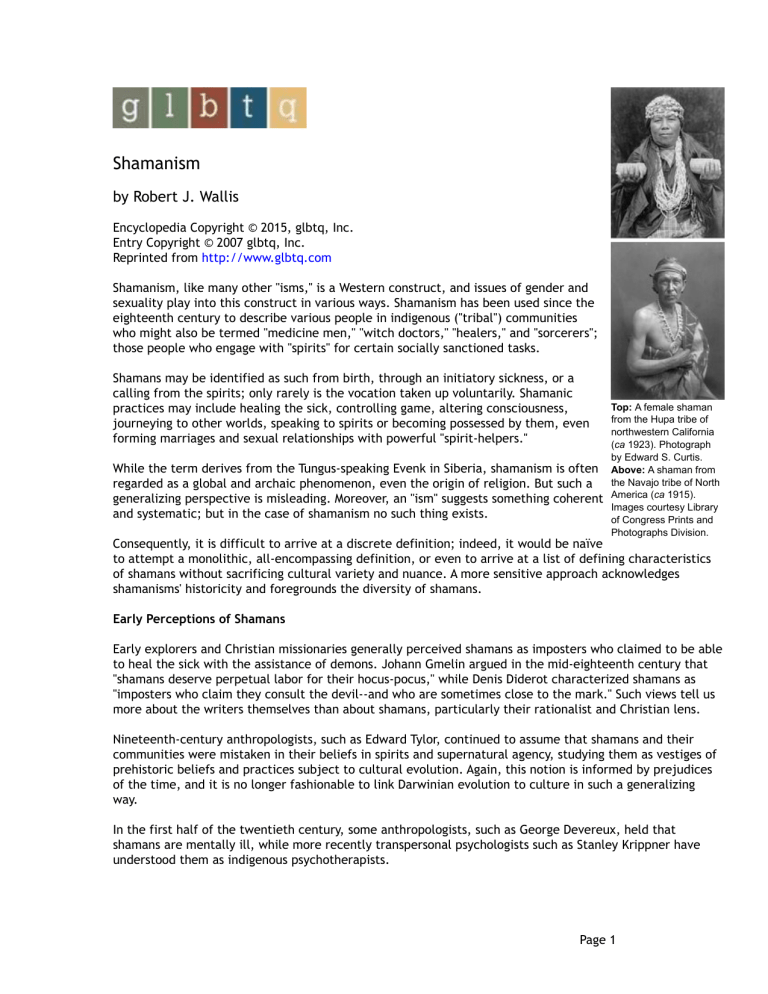
Shamanism by Robert J. Wallis Encyclopedia Copyright © 2015, glbtq, Inc. Entry Copyright © 2007 glbtq, Inc. Reprinted from http://www.glbtq.com Shamanism, like many other "isms," is a Western construct, and issues of gender and sexuality play into this construct in various ways. Shamanism has been used since the eighteenth century to describe various people in indigenous ("tribal") communities who might also be termed "medicine men," "witch doctors," "healers," and "sorcerers"; those people who engage with "spirits" for certain socially sanctioned tasks. Shamans may be identified as such from birth, through an initiatory sickness, or a calling from the spirits; only rarely is the vocation taken up voluntarily. Shamanic practices may include healing the sick, controlling game, altering consciousness, journeying to other worlds, speaking to spirits or becoming possessed by them, even forming marriages and sexual relationships with powerful "spirit-helpers." While the term derives from the Tungus-speaking Evenk in Siberia, shamanism is often regarded as a global and archaic phenomenon, even the origin of religion. But such a generalizing perspective is misleading. Moreover, an "ism" suggests something coherent and systematic; but in the case of shamanism no such thing exists. Top: A female shaman from the Hupa tribe of northwestern California (ca 1923). Photograph by Edward S. Curtis. Above: A shaman from the Navajo tribe of North America (ca 1915). Images courtesy Library of Congress Prints and Photographs Division. Consequently, it is difficult to arrive at a discrete definition; indeed, it would be naïve to attempt a monolithic, all-encompassing definition, or even to arrive at a list of defining characteristics of shamans without sacrificing cultural variety and nuance. A more sensitive approach acknowledges shamanisms' historicity and foregrounds the diversity of shamans. Early Perceptions of Shamans Early explorers and Christian missionaries generally perceived shamans as imposters who claimed to be able to heal the sick with the assistance of demons. Johann Gmelin argued in the mid-eighteenth century that "shamans deserve perpetual labor for their hocus-pocus," while Denis Diderot characterized shamans as "imposters who claim they consult the devil--and who are sometimes close to the mark." Such views tell us more about the writers themselves than about shamans, particularly their rationalist and Christian lens. Nineteenth-century anthropologists, such as Edward Tylor, continued to assume that shamans and their communities were mistaken in their beliefs in spirits and supernatural agency, studying them as vestiges of prehistoric beliefs and practices subject to cultural evolution. Again, this notion is informed by prejudices of the time, and it is no longer fashionable to link Darwinian evolution to culture in such a generalizing way. In the first half of the twentieth century, some anthropologists, such as George Devereux, held that shamans are mentally ill, while more recently transpersonal psychologists such as Stanley Krippner have understood them as indigenous psychotherapists. Page 1 In his landmark work of 1951 (published first in French, then in English in 1964), Mircea Eliade suggested that shamanism is an "archaic technique of ecstasy," involving "soul flight," or "journeying," but Eliade has been criticized for generalizing the variety of shamanisms and overlooking instances that did not fit his grand scheme. Alternative Realities and Neo-shamans In the 1960s attention turned in particular to shamans' use of helping-plants (what Westerners term "drugs") and other powerful substances to enter alternative realities, with the inauthentic ethnography of Carlos Castaneda inspiring a psychedelic generation to experiment with such realities themselves. These Western shamans, or "neo-shamans," sought spiritual meaning in their lives outside the religious mainstream, and shamanism, as an exotic "spirituality," was perceived to offer this. The publication of Michael Harner's Way of the Shaman (1980) offered neo-shamans the "core-shamanic" techniques for apparently entering a "nonordinary reality" without the aid of hallucinogens, making use rather of auditory driving (particularly repetitive drumming). Harner's approach aligned with Eliade, so that many core-shamans speak of using drumming to facilitate "the shamanic journey," and this is seen as the defining feature of all shamanisms, once again neglecting cultural nuance. Interface of Indigenous Shamans and the West For indigenous shamans, the interface between West and non-West facilitated success and notoriety in some instances: for example, the Peruvian curandero (or healer) Eduardo Calderón offered paid tutelage to eager Western pilgrims. But for others, such as the Mexican Mazatec Indian curandera María Sabina, popularized by Gordon Wasson in his Life article "Seeking the Magic Mushroom," Western visitors irrevocably disrupted the local community. Native Americans, in particular, have campaigned against the appropriation and representation of "shamanism" by academics and neo-shamans. Meanwhile, neo-shamans in Britain and elsewhere, have explored evidence from the past in reconstructing "new-indigenous" shamanisms that re-enchant life in postmodernity. A good example is the practice of "seidr" ("magic" or "sorcery") among today's heathens who interpret records of seidr in the Icelandic sagas and other Northern literature, history, and archaeology. This reconstruction enables a contemporary shamanic practice in which a "volva" or seeress speaks to the ancestors in a "trance" in order to prophesy for a gathered community of heathens. Recent Theorizing and Animism The theorizing of shamanism has marked important intellectual developments. Shamanism has been held to be the "oldest," most "primitive," even the "origin" of religion (whatever this may mean), but it is misleading to associate contemporary indigenous practices with a fixed and unchanging past. Prehistoric shamans, however, have been innovatively theorized by archaeologists. Rock art researchers have interpreted various cave paintings and rock engravings as originating in the altered consciousness of shamans. More recently, anthropologists have attended to the nature of shamanism in nuanced fashion, broadening our understanding away from "the shaman" in a society with a "shamanic worldview" to consider the specificity of relationships and wider epistemological concerns. The "old animism," as presented by Tylor, assumed that indigenous peoples were mistaken in their belief in "spirits" and that "inanimate objects" had "souls." More recently, scholars theorizing a "new animism" have Page 2 foregrounded the sophisticated nature of animisms (there is no single "animism" but rather culture-specific animisms). New Animism For animists, the world is filled with "persons" only some of whom are human. An ongoing system of relationships and regulated behavior steers engagements between human persons and such "other-thanhuman-persons" as tree-people, seal-people, and stone-people. Shamans are often key figures in these relationally-driven ontologies, acting as mediators, working to maintain harmony: for example, if a hunter offends an animal by using inappropriate etiquette, resulting in the hunter falling ill, a shaman negotiates between the offended "spirit" of the dead animal in order to return the stolen "soul" of the hunter and so restore social harmony between the affected "persons." Animism and Gender Among the Ojibwe and speakers of cognate Algonkian language, a grammatical distinction is made between animate and inanimate genders, not between male and female genders. Persons and personal actions are talked about in a different way from objects and impersonal events. As demonstrated in the work of such scholars as Marjorie Balzer, Marie Czaplicka, and Bernard Saladin D'Anglure, these and other indigenous conceptions of gender, sex, and sexual orientation, tend to disrupt Western binary conventions of "male" and "female," conflations of sex and gender, and heterosexuality as normative. Shamanic Gender Identities Shamanic behavior necessitates a broadening of the notion of gender to be more fluid and dynamic, to include not only male and female but also various mediating identities. Czaplicka, for example, notes that Siberian shamans are a "third class," separate from males and females, and Saladin D'Anglure proposes a "ternary" model for Inuit shamans wherein shamans are "in between" persons (by persuasion or initiation) who embody a "third gender" due to their ability to mediate. The "third gender" status of Inuit shamans is part of wider gender concepts: children are understood to have decided which gender to be before or at birth, their genitalia adapting to their decision. Other children are given the name of a deceased relative of the opposite gender, performing that gender identity for the time that they hold the name. Third Gender and Changing Ones "Third gender" (shamans in other instances may have a fourth or even multiple gender identity) overlaps in some examples with homosexuality, with the marriage of some shamans to same-sex "spirit" partners involving, in some examples, homosexual marriages in the "ordinary world." Shamans' costumes may combine features peculiar to the dress of both men and women. Early explorers assumed biological males dressed in women's clothing (some of whom were shamans) were transvestites, and the pejorative French term berdache ("male prostitute," "transvestite") entered anthropological literature. The more sensitive "two-spirit" was proposed by Native Americans in the 1990s, referring to the individual having two spirits, although "changing ones" more successfully avoids reproducing a Western binary opposition. Nonhuman Sexual Relations Page 3 Cross-dressing may indicate shamans' difference from the rest of the community or show that they have formed an intimate, sexual and/or marital relationship with a nonhuman person of the same gender. Transvestitism may be temporary, a part of specific performances, or permanent as a sign of a distinctive everyday identity. Shamans may undertake marriage to non-human persons of the same gender as themselves and, for example, a female shaman may sometimes be "male" in relation to a spirit wife: a Sora shaman of the Indian subcontinent marries a man and the "spirit son" of her predecessor, who is her own aunt. The tightly bound relationship between shamans and their other world helpers, especially those with whom they form sexual and/or marital relationships, may mean that secrets are kept, and the revealing of such secrets may lead to the withdrawal of assistance from a nonhuman helper, thus compromising the shaman's ability to shamanize. Sex has been theorized as key to understanding shamanism by Roberte Hamayon, who attends to shamans, sex, and gender in Siberian shamanism. She argues that shamanic séances among the Evenk and Buryats are "sexual encounters" in themselves. She views the "marriage" between shamans and their non-human helpers as more significant in understanding what these shamans do than the "ecstasy," "mastery of spirits," "altered states" or "journeying" emphasized by other scholars. Conclusion Early work on Siberian shamans by Sergei Shirokogoroff demonstrated that shamans may be either (or both) "hostages to the spirits" and their sexual and/or marital partners. Shamans might, then, be defined as people who welcome "possession" as an embodiment of (sexual and/or marital) relationship with otherthan-human-persons. As the most effective mediators, then--between genders, between humans and nonhumans, the living and dead, and so on--shamans mediate between all the many constituent elements, beings, and situations of the cosmos. They thereby actively accomplish meanings through the construction of relations between human and other-than-human worlds. Bibliography Blain, Jenny. Nine Worlds of Seidr-Magic: Ecstasy and Neo-shamanism in North European Paganism. London: Routledge, 2002. _____, and Robert J. Wallis. "The 'ergi' seidman: Contestations of Gender, Shamanism and Sexuality in Northern Religion Past and Present." Journal of Contemporary Religion 15.3 (2000): 395-411. ____. "Ritual Reflections, Practitioner Meanings: Disputing the Terminology of Neo-shamanic 'Performance.'" Journal of Ritual Studies 20.1 (2006): 21-36. Harvey, Graham, ed. Shamanism: A Reader. London: Routledge, 2003. ____. Animism: Respecting the Living World. London: Hurst; New York: Columbia University Press; Adelaide: Wakefield Press, 2005. Humphrey, Caroline, with Urgunge Onon. Shamans and Elders: Experience, Knowledge, and Power among the Daur Mongols. Oxford: Oxford University Press, 1996. Page 4 Hutton, Ronald. Shamans: Siberian Spirituality and the Western Imagination. London: Hambledon, 2002. Johnson, Nathan J., and Robert J. Wallis. Galdrbok: Practical Heathen Runecraft, Shamanism and Magic. London and Winchester: The Wykeham Press, 2005. Lang, Sabine. Men as Women, Women as Men: Changing Gender in Native American Cultures. Austin: University of Texas Press, 1998. Narby, Jeremy, and Francis Huxley, eds. Shamans through Time: 500 Years on the Path to Knowledge. London: Thames and Hudson, 2001. Price, Neil S., ed. The Archaeology of Shamanism. London: Routledge, 2001. Roscoe, Will. Changing Ones: Third and Fourth Genders in North America. London: Macmillan, 1998. Wallis, Robert J. "The Bwili or 'Flying Tricksters' of Malakula: A Critical Discussion of Recent Debates on Rock Art, Ethnography and Shamanisms." Journal of The Royal Anthropological Institute 8.4 (2002): 735-60. ____. Shamans / neo-Shamans: Ecstasy, Alternative Archaeology and Contemporary Pagans. London: Routledge, 2003. Whitehead, Neil L., and Robin Wright, eds. In Darkness and Secrecy. Durham: Duke University Press, 2004. About the Author Robert J. Wallis, Associate Professor of Visual Culture and Director of the M.A. in Art History at Richmond, the American International University in London, and a Visiting Research Fellow in the School of Humanities at the University of Southampton, has published widely on shamanism and related topics. Recent projects include the role of gender and sexuality in North European heathery, past and present, and the use of queer theory to negotiate non-normative perspectives on the past. His books include Shamans/Neo-Shamans: Ecstasy, Alternative Archaeologies and Contemporary Pagans, Sacred Sites, Contested Rites/Rights: Pagan Engagements with Archaeological Monuments (with Jenny Blain), and the Historical Dictionary of Shamanism (with Graham Harvey). Page 5
